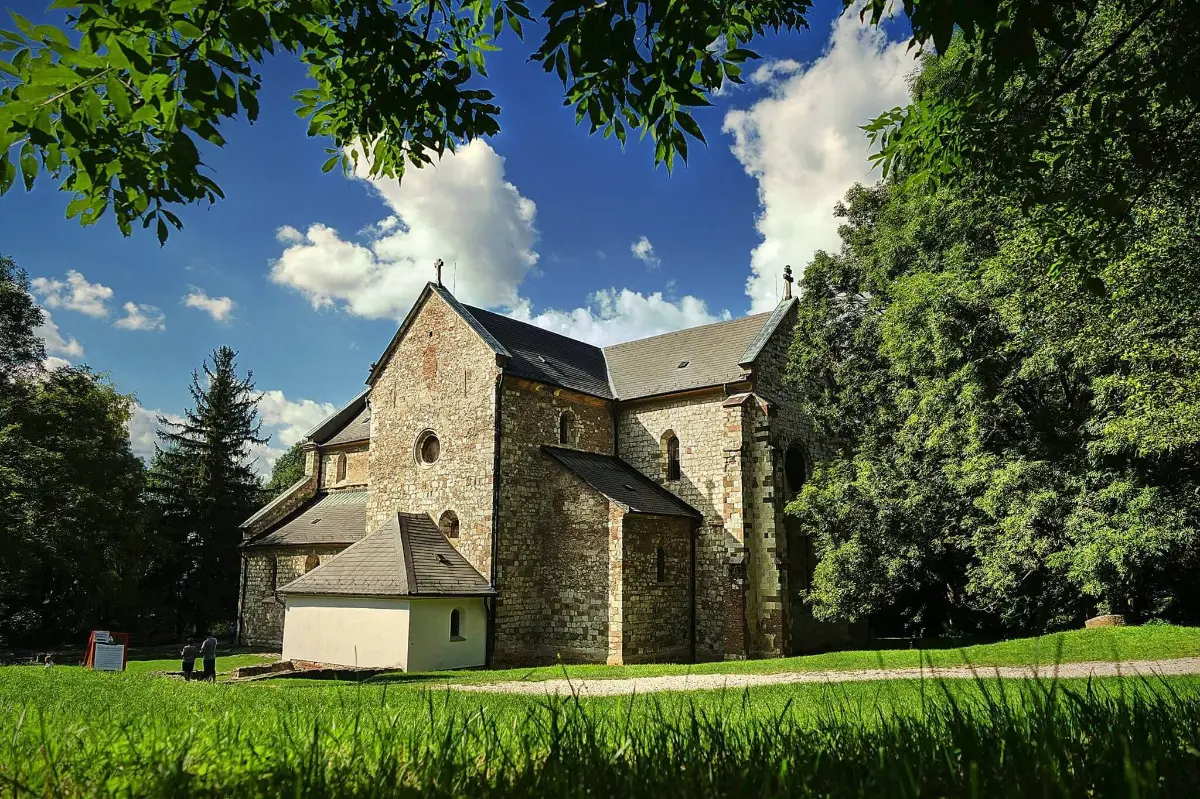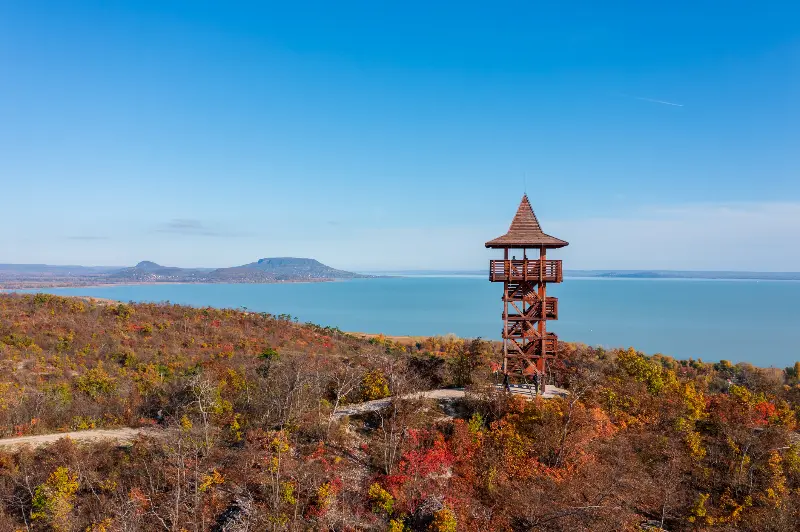
Helyszín címkék:
The Bükk-fennsík (Bükk plateau): A stronghold of Hungary’s natural treasures
Hype&Hyper
The former pride of the Bükk’s treasures, the Bél-kő (‘Bél Stone’), is still an impressive sight, although it shows signs of quarrying. The Bél-kő trail starts from the Cistercian Abbey of Bélapátfalva, founded in 1232 at the foot of the mountain in a breathtakingly beautiful setting. The Cistercian Abbey of Bélapátfalva is the only intact medieval Cistercian church in Hungary, and will be open to the public again from spring 2024. The winding paths of the trail help you to understand the history of the mountain and its rich wildlife, until you reach the summit of the Bél-kő, which rises 815 metres above the landscape. On the ridge of the Bél-kő, which stretches from the Bükk plateau, two botanical-geographical kingdoms meet, as if the boundaries of two flower gardens were merged in one garden: on the limestone rocks between the Southwest Bükk and the North Bükk, typical plants of both provinces can be found. It is a pleasant walk through the woods from Bélapátfalva to Szarvaskő, along the road that for hundreds of years the local people have had to struggle down by cart or on foot. This route is also part of the National Blue Trail, which is particularly popular in the area.

Cave and waterfall
The popularity is not a coincidence, of course: let’s jump a little further north of Bél-kő, to the Szalajka Valley, a much sought-after tourist attraction in the region. The reason lies in its diverse natural resources. The region’s tidal protagonist, the Fátyol-vízesés (‘Veil Waterfall’), is a truly spectacular sight, and thanks to its familiarity, there are clear, well-travelled paths leading to it. For a slightly different perspective, don’t miss the cave behind the waterfall! The other iconic symbol and geological treasure of the valley is the Szikla-forrás (‘Rock Spring’), which is not only the largest karst spring in the Bükk, but also the thirst quencher for hikers. Picnic lovers, attention! Hidden behind the waterfall is the Gloriette-tisztás (‘Gloriette clearing’) – a special feature of this place is that it was formed by lime deposits. The clearing is the terminus of the Szilvásvárad narrow gauge railway, so it is also accessible by it.
From Szilvásvárad, you can also reach by car the 10-kilometre circular tour of the Bükk plateau, which starts from the Olasz-kapu (‘Italian Gate’) and follows the trail named after it. On this route, you will discover the geological, botanical and cultural history of the area and the natural treasures of the Nagy-fennsík (‘Great Plateau’), including also the mystical beech forest of the Őserdő (‘Ancient Forest’) and the highest cave in the country, the Kőrös-barlang.

Special species everywhere
The motif of berms, caves and waterfalls is broken by the highly prized clearing of the plateau, the Nagy-mező (‘Great Meadow’). Its name reflects only a trace of its natural importance. There are only a few beautiful and species-rich mountain meadows in our country, and an extraordinary one of them is the “Nagy” (‘Great’) of Bükk – it stands out like a shrine among them all. It is located at an altitude of over 900 metres, which is unique in this country, and the landscape, rich in pine forests, beech forests and mountain meadows, is a paradise for hikers. This is why it is important to know that the area is home to 5 specially protected and 77 protected plants, with hardly a square metre without a special species. Deforestation played a major role in the development of the field, after which the area was used more for grazing, and since the creation of the national park it has been a specially protected area. Due to the restriction of the latter, we can no longer see the local Lipizzaner horses galloping here, but we can make up for it by following the hiking trail towards Csipkéskút.
In search of stars
As with the waterfall, our path winds down a little further to the Három-kő (‘Three Stones’) lookout. Of all the viewpoints on the Bükk plateau, this 904-metre-high cliff offers a first-rate panorama. It probably gets its name from the fact that it is supported by three sharp limestone peaks relatively close together. It can be approached as a continuation of the Olasz-kapu nature trail, but it also offers enough excitement as a stand-alone hike from Bánkút. A short detour will also take you to the recently opened Bükk Csillagda (‘Bükk Observatory’), where you can even pay for stargazing thanks to the low light pollution in the area. There are plenty of daytime activities too, though, with world-class telescopes, touchscreen meteorites, VR tours and an astronomy trail.

A place with an exotic atmosphere is hidden in a breathtaking settlement, barely 20 minutes by car from the Csillagda! The Bambara Hotel Premium in Felsőtárkány awaits guests looking for relaxation and recreation with services that are unique in the country. The African-themed, two-storey, approximately 1,000-square-metre wellness empire includes a meditation soul oasis, a mystical experience bath, a salt-spray steam cabin, saunas and jacuzzis: all of this is a great choice for ending a long and exhausting day of hiking! And if you were to go on a treasure hunt, you can wander into the Bükk Mystery Park belonging to the hotel, where wallabies and meerkats can accompany your adventure. Just make sure you can find your way out of the labyrinth that winds through the depths of the wild primeval oak-wood!

Medicine in grass and trees
If you are in the Bükk countryside, it is worth visiting the village of Bükkszentkereszt, perhaps the most famous man in the region, the Bükk grassman. The village is a place of pilgrimage for herbalists: György Szabó’s legacy, his six-decade collection of mountain plants, lives on in Uncle Gyuri’s garden. The Gyógynövényház (‘Herb House’) and the Györgytea shop are visited by thousands of visitors every year to experience the ancient power of folk medicine first hand. Beyond the village, after a 20-minute drive or a long hike, you will find yourself in the famous Lillafüred area, where you can visit the waterfall or the hanging garden.
The Garadna Valley is the terminus of the Lillafüred narrow gauge railway. The Pisztráng Tanösvény (‘Trout Nature Trail’) starts from the station, which refers to the important tradition of trout farming here. The road itself leads to a breeding farm and the adjacent Erdei Halsütöde (‘Forest Fish Fryer Chalet’) – where you can sample the local gills. The Garadna Stream, although modest in size, bisects the Bükkkös (‘Beech Forest’) – so the plateau is not only natural but also geographically diverse.









